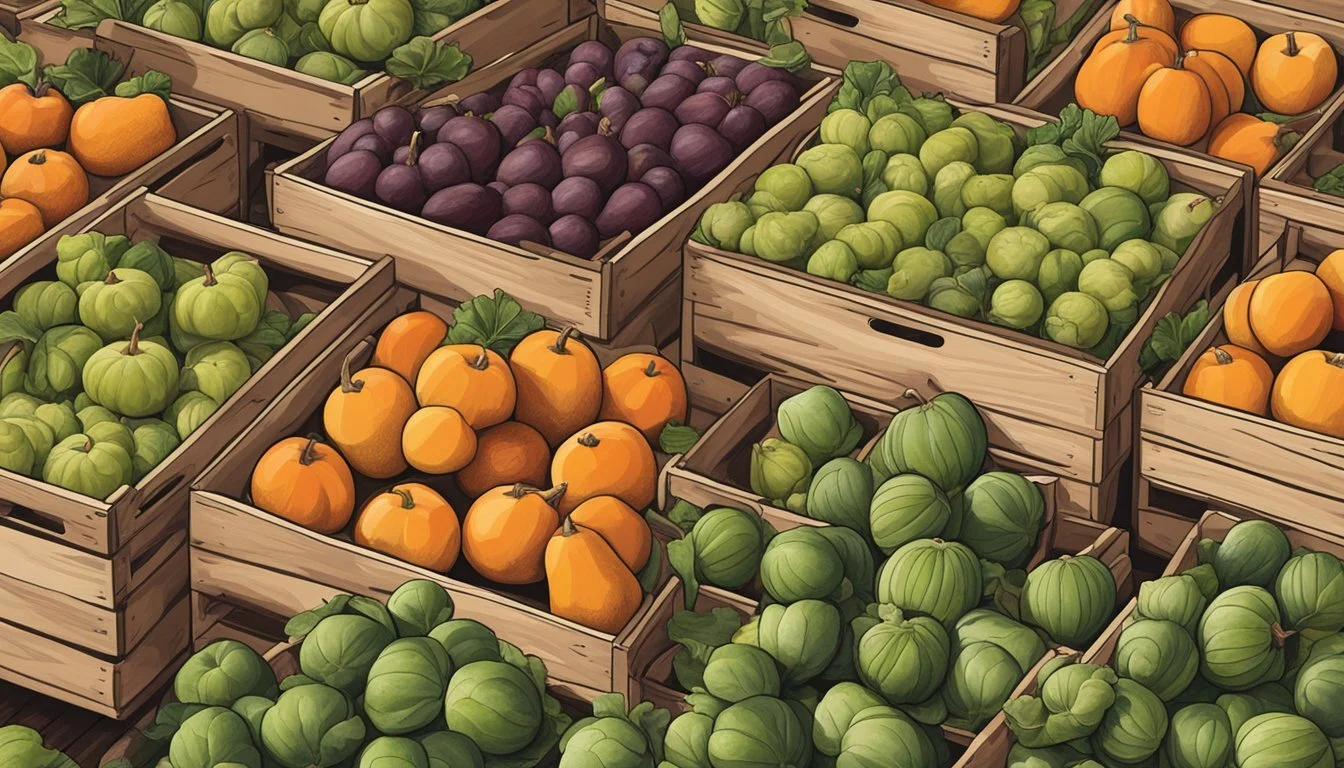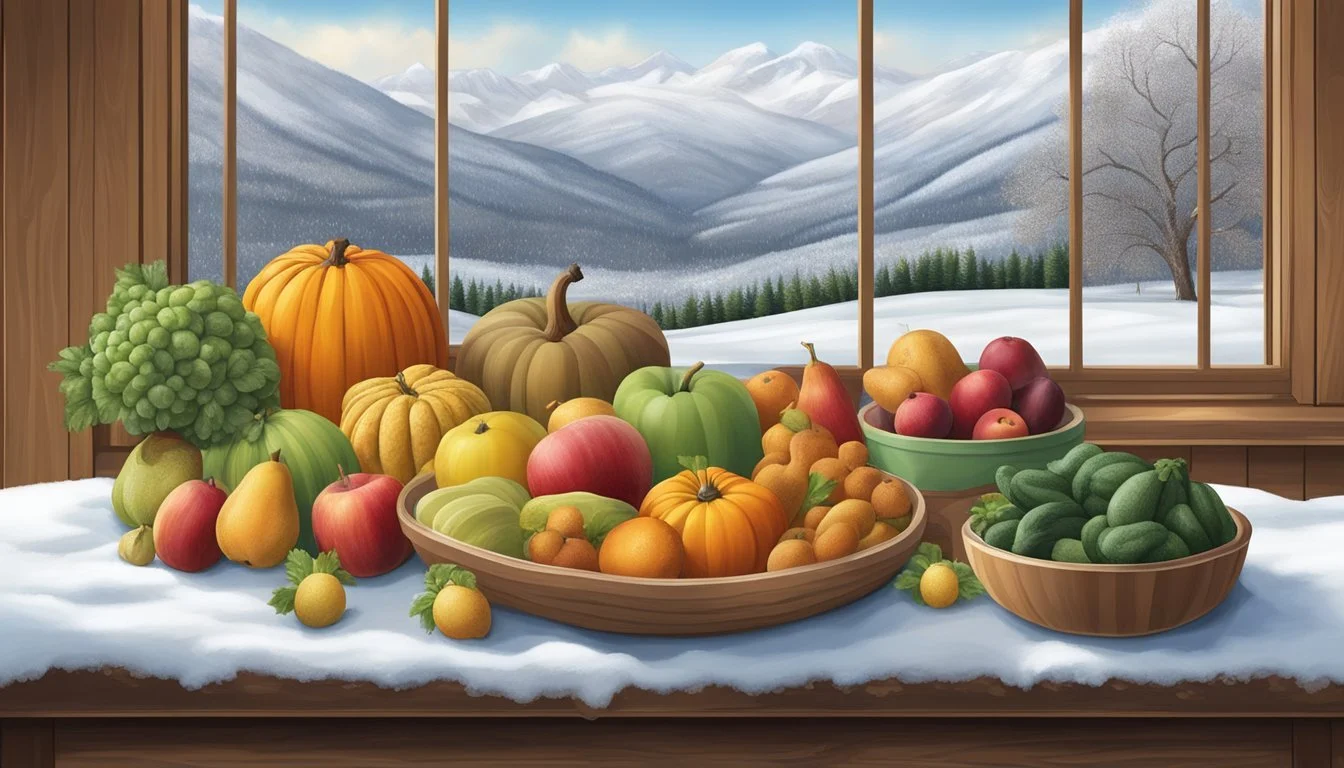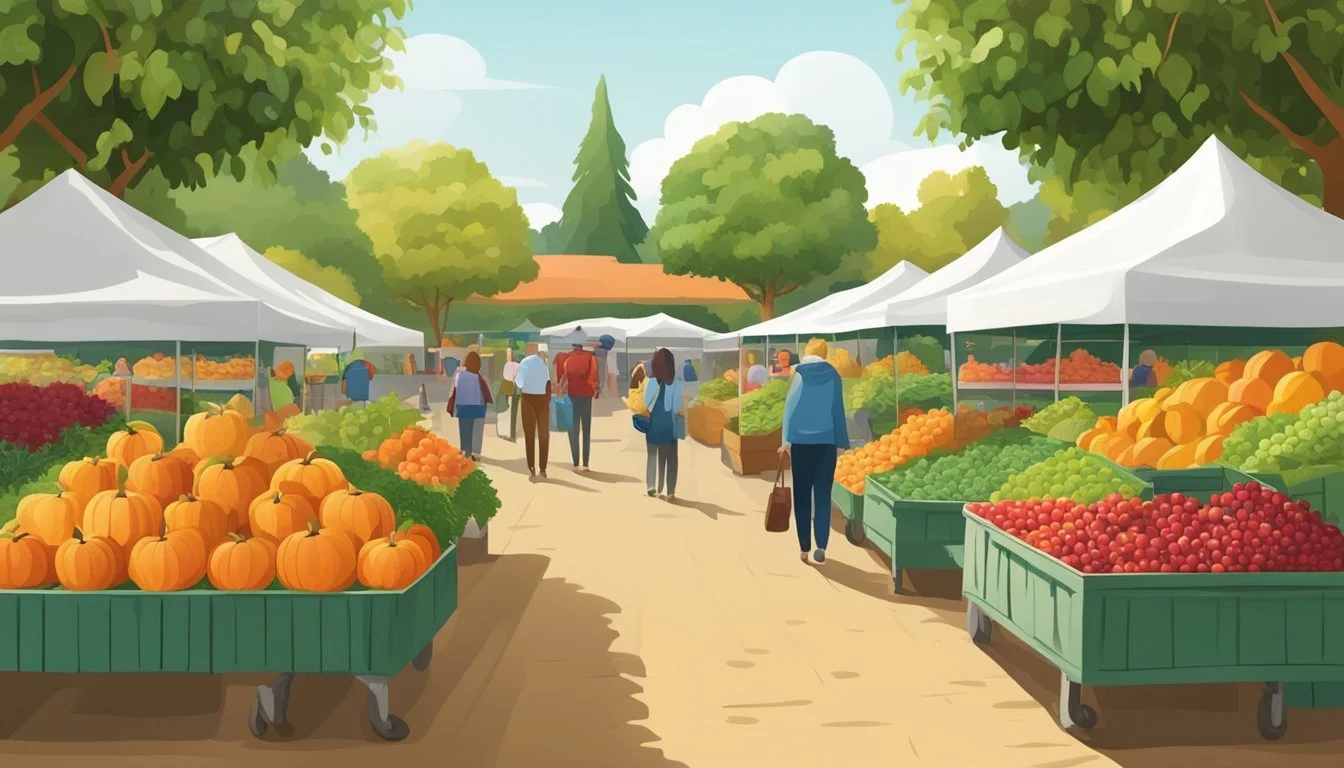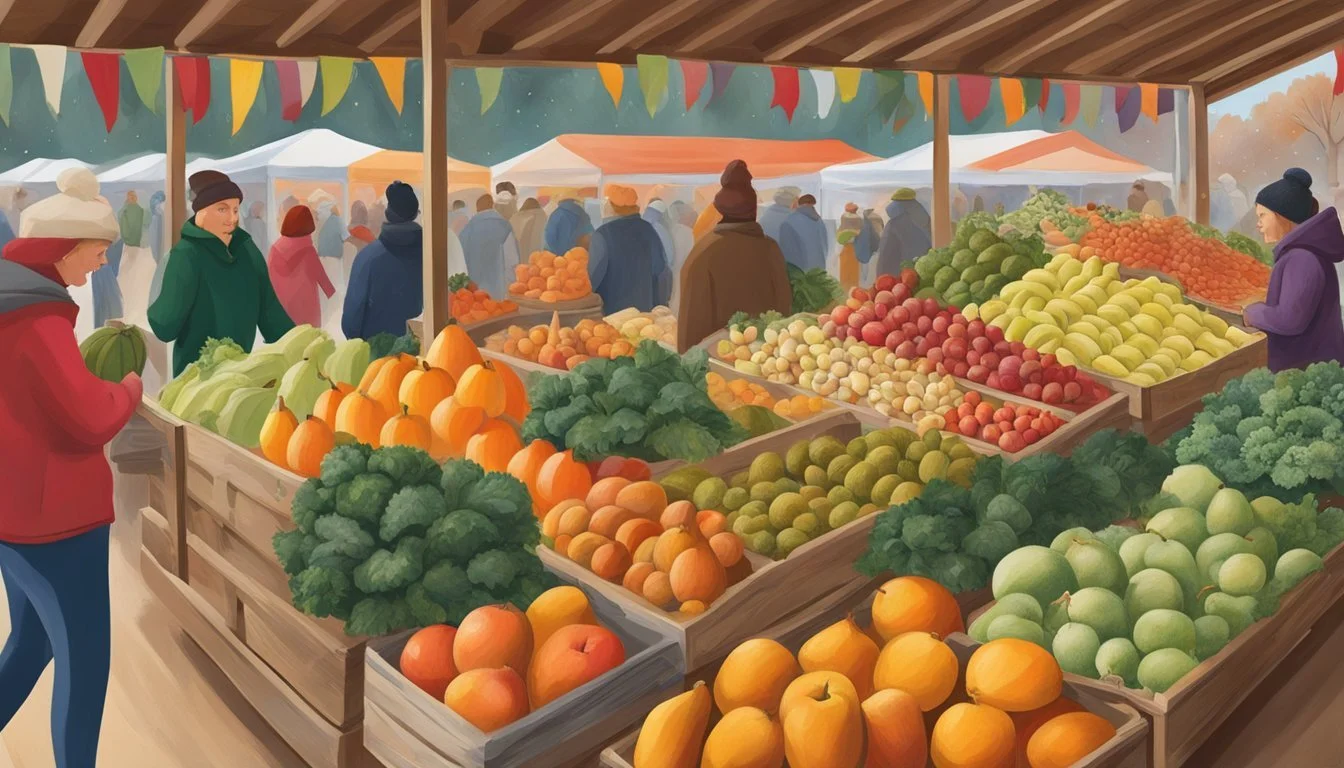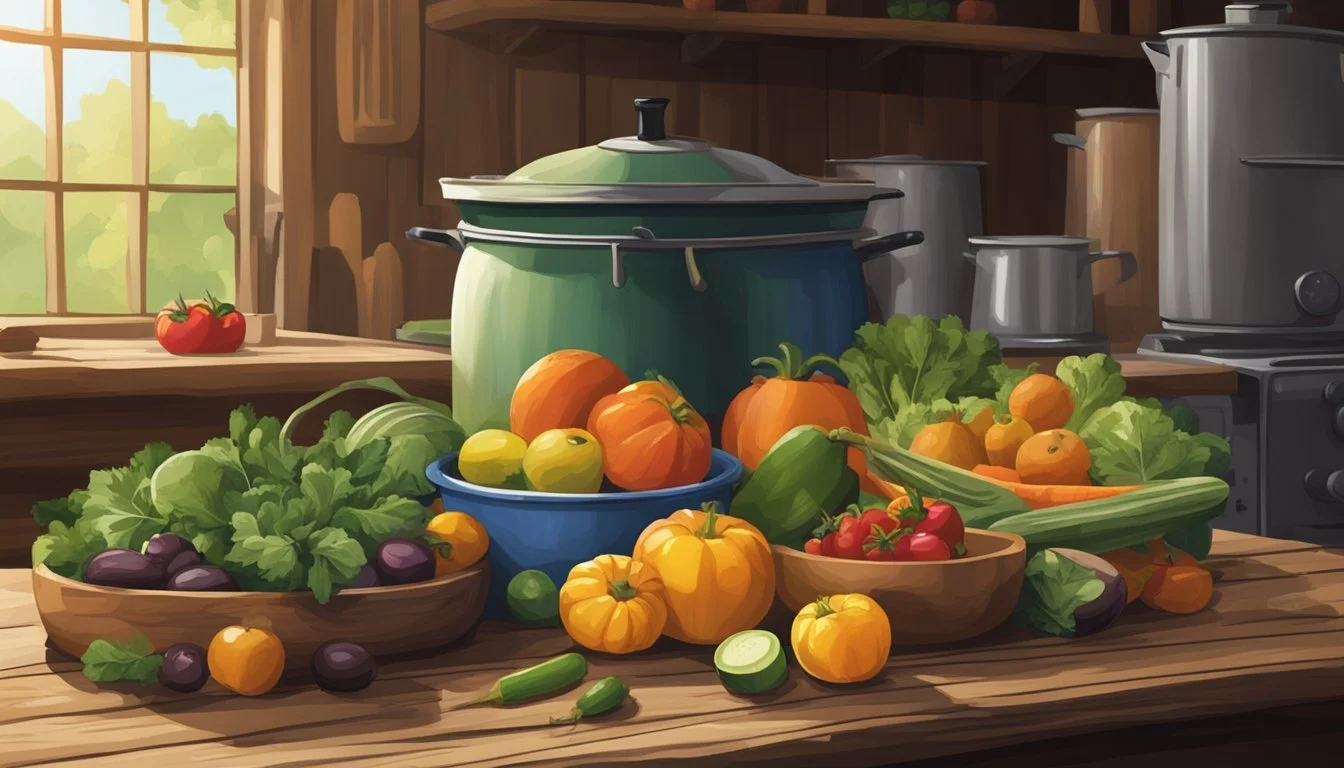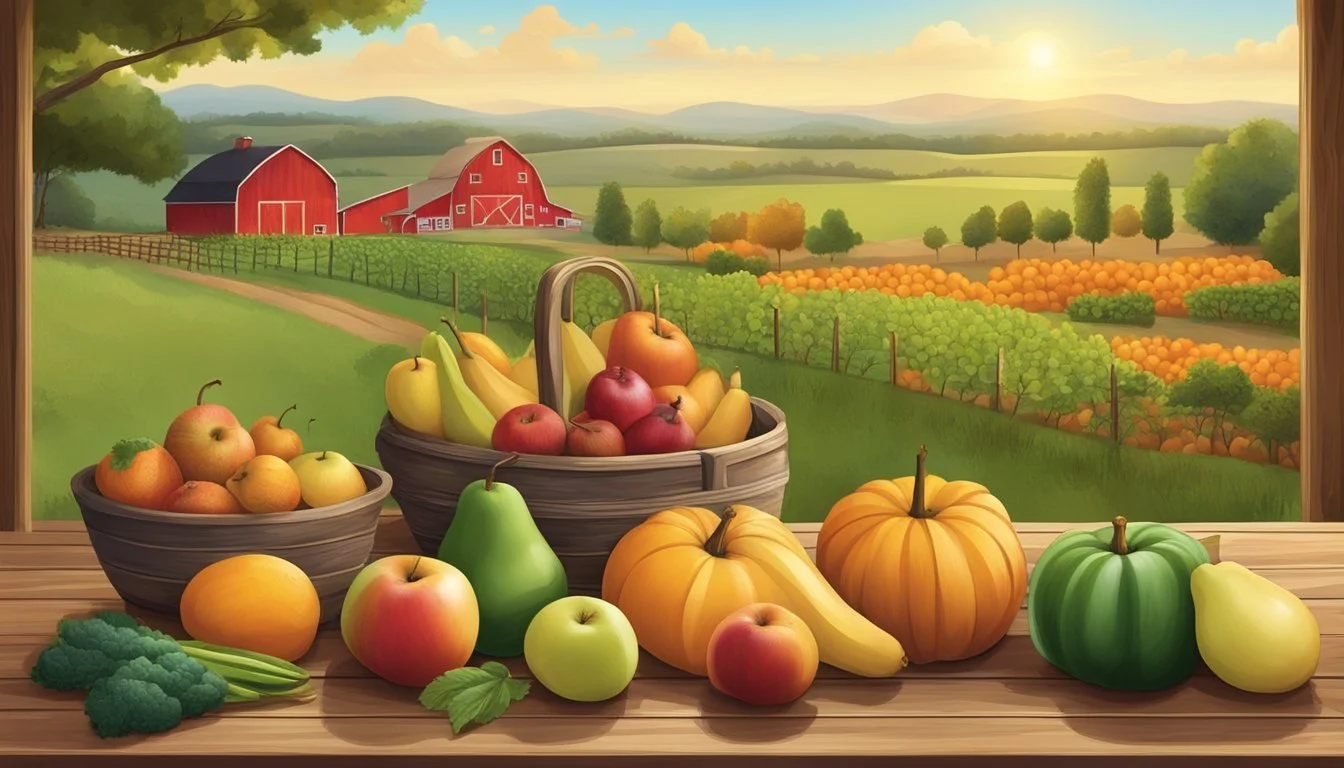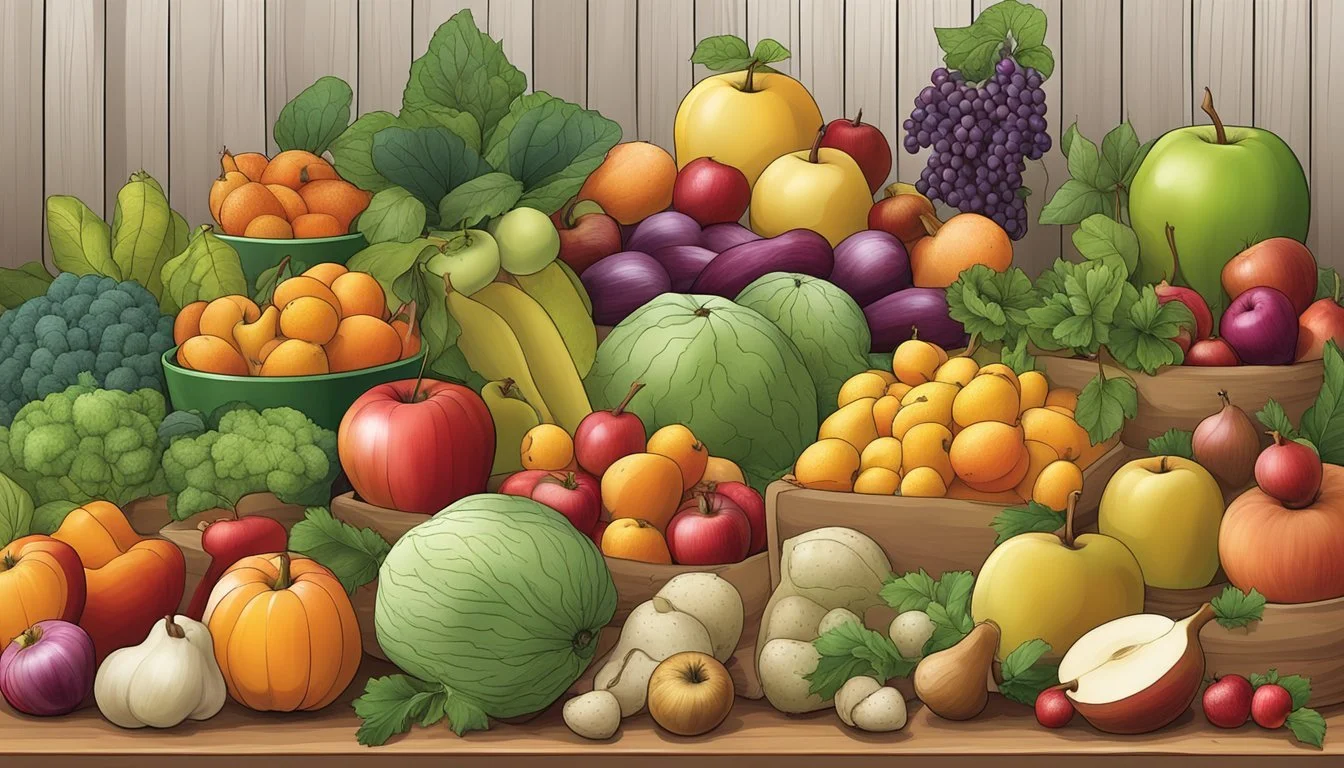Kentucky Seasonal Fruit & Vegetables in December
Your Guide to Winter Produce
This Article is Part of our Kentucky Seasonal Fruit & Veg Calendar
December in Kentucky brings a shift in availability for fresh produce, as the winter season takes hold. Even as the weather cools and frosts become more frequent, the state's agricultural output continues to provide a variety of fruits and vegetables. Seasonal eating not only supports local farmers but also ensures that consumers enjoy produce at its peak flavor and nutritional value. During this month, Kentucky's farms offer a limited yet wholesome array of produce that can be incorporated into holiday meals (What wine goes well with holiday meals?) and cozy winter dishes.
Due to Kentucky's climate, December is not a peak season for a wide range of fresh fruits. However, stored apples (how long do apples last?) from earlier harvests remain available, providing a sweet and crunchy option for snacking or culinary use. Cranberries, while not commonly grown in Kentucky, are often included in seasonal eating guides due to their harvest in the late fall and availability through December in North America, adding a tart burst of flavor to Kentucky tables.
Vegetables in December take on a hardier character, with various leafy greens such as spinach (What wine goes well with spinach?) and kale thriving in the chill. Root vegetables like radishes and turnips are also in season, offering earthy and robust flavors ideal for hearty stews and roasts. Cruciferous vegetables, like Brussels sprouts, can withstand the cold and are often at their best this time of year. These seasonal vegetables can provide both nutrition and comfort as part of winter meals in Kentucky.
Seasonal Highlights
December in Kentucky brings a bounty of fresh produce to the table. As temperatures drop, certain crops reach their peak, offering rich flavors and essential nutrients.
Winter Fruits
Apples: One of Kentucky’s enduring winter fruits, apples offer a variety of flavors from sweet to tart. Varieties like Fuji and Granny Smith are commonly available.
Cranberries: While not grown extensively in Kentucky, cranberries come into season in late fall and are often associated with December festivities in the region.
Winter Vegetables
Turnips: These root vegetables thrive in cooler weather, giving them a sweet yet earthy taste. They are especially tender and flavorful this time of year.
Carrots: Hardy and versatile, carrots can be harvested throughout winter in Kentucky, providing a sweet, crisp addition to meals.
Understanding Seasonality
In Kentucky, seasonal produce availability is influenced by both climate patterns and individual growing cycles. This section will detail how these factors play into the fruits and vegetables you may find in December.
Role of Climate
Kentucky falls within hardiness zones 6 and 7, which dictates the types of fruits and vegetables that can thrive during the winter months. The region's typically cool to mild winters allows for some produce to be available during this season. Specific planting schedules take into account the first and last frost dates, which impact the growth of certain crops and their harvest times.
Growing and Harvesting Cycles
Produce such as leafy greens (spinach and kale) and certain root vegetables (radishes and turnips) may still be harvested in December, based on their respective sowing and maturation dates. While the selection of fresh fruits is limited, stored apples often remain available, having been harvested during their peak season and preserved for winter months. It's essential to recognize that harvest cycles for winter produce are generally longer, allowing for a later harvest period that extends through early winter.
Health and Nutrition
In Kentucky, December offers a unique range of seasonal produce that is not only fresh but also rich in nutrition. Consuming fruits and vegetables during their peak season can enhance their nutritional benefits, as they are often harvested at optimal ripeness. This ensures a higher concentration of vitamins, minerals, and antioxidants.
Organic produce is another aspect to consider for those concerned about health and nutrition. Organic fruits and vegetables are grown without synthetic pesticides or fertilizers, potentially lowering the presence of harmful chemicals.
For December in Kentucky, the following table outlines some seasonal fruits and vegetables, along with their nutritional highlights:
Produce Nutritional Benefits Apples High in fiber, vitamin C, and various antioxidants. Pears Good source of vitamin K, fiber, and copper. Sweet Potatoes (What wine goes well with sweet potatoes?) Rich in vitamin A, vitamin C, manganese, and fiber. Winter Squash Contains vitamin A, vitamin C, fiber, and magnesium. Greens (Spinach, Mustard (how long does mustard last?), Collard, Turnip) High in vitamins A, C, and K, folate, and calcium.
Consuming these fruits and vegetables can contribute to a balanced diet. Apples and pears, for example, offer dietary fiber, which supports digestive health. Sweet potatoes and winter squash are dense in beta-carotene, which the body converts into vitamin A, crucial for vision and immune function. Greens are known for their iron content and can be especially beneficial for maintaining healthy red blood cells.
It’s important to remember that freshness plays a pivotal role in the taste and nutritional content of produce. Kentucky's December harvest allows individuals to enjoy produce that hasn't traveled long distances, potentially preserving its taste and nutrient profile. Hence, incorporating these seasonal offerings is a confident step towards better health.
Local Farms and Markets
In December, Kentucky's farms and markets offer a variety of fresh, locally-grown produce despite the chilly weather. These venues are essential for maintaining access to seasonal goods and supporting the local economy.
Kentucky Farmers Markets
Kentucky boasts numerous farmers markets that remain active during December. Shoppers can find fresh, seasonal produce alongside other local goods. The markets often provide subscription services or updates through social media to keep patrons informed about available produce and operating hours. Visiting these markets ensures that consumers can enjoy the freshness that local farms have to offer.
Lexington Farmers Market: Open year-round with winter hours; offers fresh produce, meats, and artisan goods.
Louisville Farmers Market: Provides seasonal vegetables and fruits, often including greenhouse-grown items during colder months.
Local Farm Benefits
Patronizing local Kentucky farms directly benefits the community in multiple ways. It supports Kentucky farmers economically and sustains their livelihoods. Furthermore, buying from local farms guarantees a level of freshness that is hard to match, as the travel time from farm to table is drastically reduced.
Economic Impact: Money spent at local farms contributes to the state's economy and stimulates local business growth.
Health and Freshness: Produce purchased from local farms is fresher, which can enhance flavor and nutritional value.
Kentucky's local farms and markets remain an indispensable part of the state's culture and economy, especially during the winter months when freshness is a cherished commodity.
Monthly Availability
In December, the harvest calendar for Kentucky narrows as winter’s chill sets in. There remains, however, a selection of hardy produce that can withstand the colder temperatures.
December Produce Guide
Fruits:
While December is not peak season for fruit in Kentucky, one may still find apples and pears stocked from the fall harvest.
Vegetables:
Root vegetables like sweet potatoes and winter squash are still available due to their robust storage capabilities.
Kale, collard greens (how long do collard greens last?), and spinach may be available, weather permitting, as they can endure light frosts.
Some farmers may offer greenhouse-grown herbs and lettuces.
Nuts:
Black walnuts are typically harvested in the fall but may still be available through December.
It's important to note that while these items are generally available, specific availability may vary by farm and weather conditions. Consumers are encouraged to check with local farmers' markets for the most current information.
Cooking and Recipes
Seasonal fruits and vegetables from Kentucky in December offer vibrant flavors and are ideal ingredients for a variety of recipes. Root vegetables, such as carrots, parsnips, turnips, and beets, are foundational for winter comfort dishes. Hearty soups and stews gain depth from their earthy flavors, while roasting these veggies caramelizes their natural sugars, enhancing the taste.
Citrus fruits, another December favorite, introduce a refreshing zest to Kentucky's winter cuisine. They are excellent for brightening up savory dishes or can be used in creating delectable jellies and jams. Utilizing these seasonal offerings, cooks can prepare citrus-based glazes for roasted meats (What wine goes well with roasted meats?), or incorporate fresh juice and zest into vinaigrettes for a light salad dressing.
Here are some ways to use December's produce:
Vegetables Dish Ideas Carrots Roasted with honey and herbs Parsnips Pureed into soups Turnips Mashed as a potato alternative Beets Salad with goat cheese and walnuts
Fruits Dessert Ideas Citrus Fruits Lemon bars, orange marmalade Pomegranates Fresh in salads or as a yogurt topping Cranberries Homemade cranberry sauce or relishes
The key to maximizing flavor is to choose quality, ripe produce and to prepare it simply, allowing the natural tastes to stand out. Always remember that in December, Kentucky's gardens may be resting, but its kitchens are very much alive, bursting with fresh, local flavors.
Sustainable Practices
In the context of Kentucky's December produce, sustainable practices involve methods that promote soil health and the well-being of the local ecosystem. Two pivotal approaches include organic farming and the reduction of pesticide use.
Organic Farming
Organic farming in Kentucky during December adheres to techniques that maintain the balance of the natural environment. Farmers prioritize soil fertility through the use of compost, manure, and cover cropping. They also utilize crop rotation to help control pests and diseases, thus preventing the overreliance on synthetic chemicals. This method supports the growth of winter produce such as spinach and kale, cultivated under the organic standards set by the USDA.
Soil Health: Enhance with compost and organic matter.
Crop Rotation: Implement to naturally reduce pest populations.
Reducing Pesticides
The reduction of pesticides is a critical aspect of sustainable agriculture in December. Kentucky farmers concentrate on integrated pest management (IPM) strategies, which include mechanical and biological controls alongside minimal, targeted chemical interventions. This approach helps safeguard not only the limited winter fruit harvests, like stored apples, but also the health of the workers and the local wildlife.
IPM Techniques: Employ mechanical traps and beneficial organisms.
Chemical Use: Apply only when necessary and as a last resort.
Regional Variances
December seasonal produce in Kentucky features varieties that can withstand the colder climate. Availability may vary based on specific regional climate conditions and farming practices.
Western Kentucky Produce
In Western Kentucky, areas like Henderson and Bowling Green offer a selection of winter-hardy vegetables. Henderson is known for producing:
Root Vegetables: such as carrots and turnips
Leafy Greens: including collards and kale
Bowling Green farmers tend to focus on:
Greenhouse-grown Produce: such as lettuces and herbs
Eastern Kentucky Produce
Eastern Kentucky, with its unique Appalachian climate, presents a distinct variety of winter produce. In places like Frankfort and Lexington, one can find:
Apples: storage varieties available
Winter Squash: including acorn and butternut
Lexington and Louisville, despite colder temperatures, typically extend their growing season with:
Indoor Farming: offering herbs and microgreens
Beyond Borders
Kentucky's produce availability is not only shaped by its own climatic patterns and agricultural practices but also by the influence of its neighboring states.
Influence of Neighboring States
Ohio: Ohio's proximity can affect the availability of certain produce in Kentucky's markets due to shared climate and similar harvest times. For example, Ohio's apple and tomato crops may appear in Kentucky's markets in December, complementing the local selection.
Mississippi: While having a slightly warmer climate, Mississippi's influence is noted in the presence of late-season vegetables that may extend into Kentucky's December markets, such as sweet potatoes.
Virginia: Virginia, to the east, shares the Appalachian region with Kentucky and thus contributes similar varieties of December crops like winter squash and leafy greens.
Tennessee: Sitting directly to the south, Tennessee's agricultural output can impact Kentucky, especially through the cross-border trade of cool-weather crops like brussels sprouts and varieties of cabbage.
Each state brings its distinctive agricultural products to the collective table, enriching the selection for consumers and creating a diverse market that benefits from the regions' interconnected economies and ecosystems.
Events and Education
December in Kentucky offers unique opportunities for locals to enhance their knowledge about seasonal produce through various educational events. Both children and adults can learn from these experiences, emphasizing the state's commitment to agricultural literacy.
Seasonal Workshops
Kentucky farmers typically facilitate seasonal workshops to educate the community on winter crops and sustainable practices. Participants gain hands-on experience in preserving and preparing seasonal vegetables, such as winter squash and root vegetables that are commonly available at this time. Farmers markets often host these workshops, providing a platform for local farmers to share their expertise with the community, including tips on how to incorporate these ingredients into holiday meals.
Community Initiatives
Community initiatives play a pivotal role in fostering knowledge and appreciation for local produce among Kentucky's youth. Programs frequently visit schools, offering children interactive activities that teach them about December's seasonal fruits and vegetables. Farmers collaborate with educational systems to bring pieces of the farmers market experience into the classroom. These initiatives not only support the concept of farm-to-table but also encourage healthier eating habits by showing children how to identify and use fresh, local produce.

